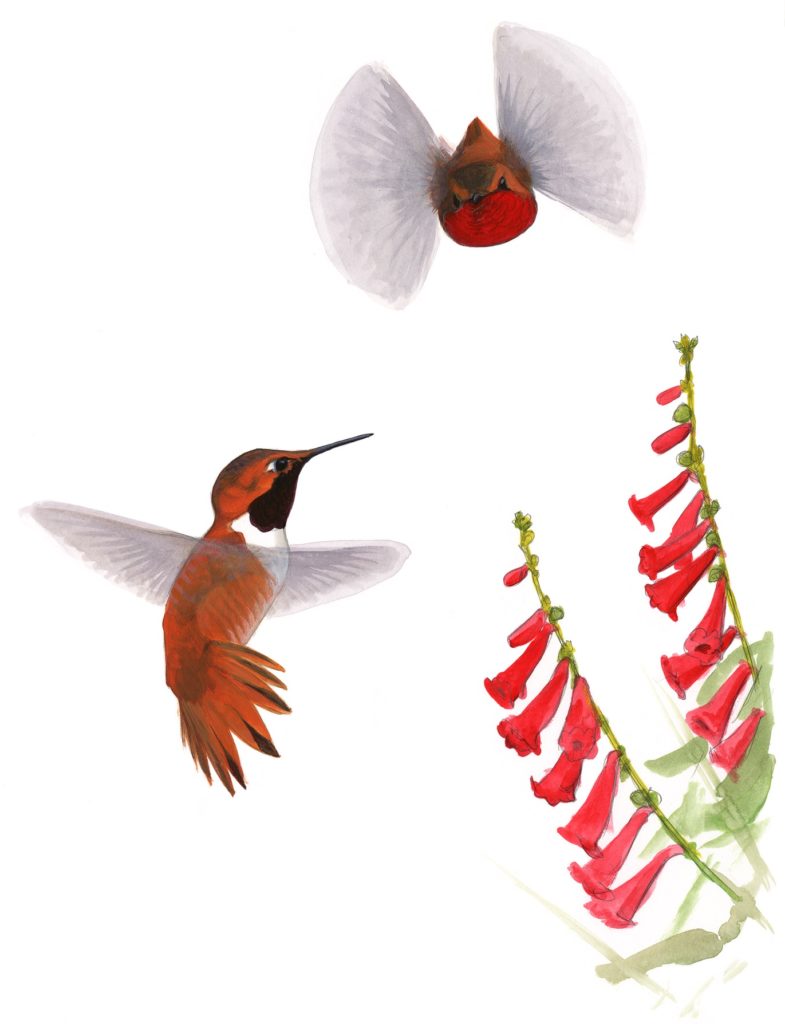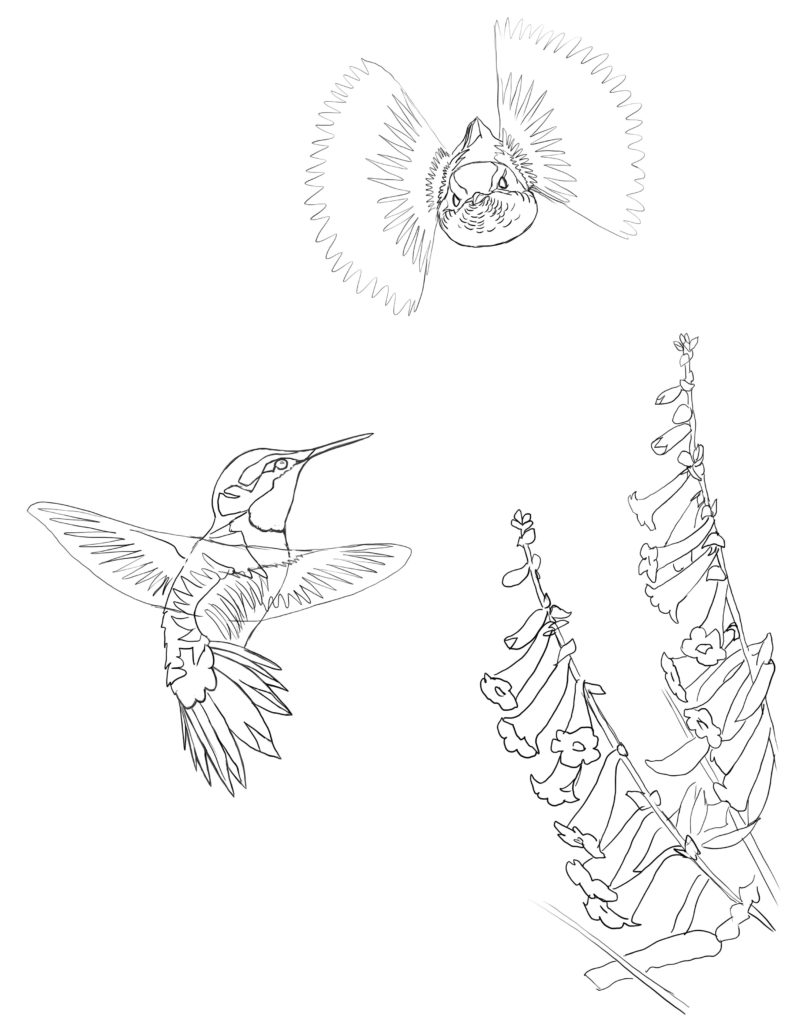
Several species of hummingbirds (including the Rufous Hummingbird) are common in western North America. In the East only the Ruby-throated Hummingbird is expected. Hummingbirds and flowers have evolved together, and the flowers that are pollinated by hummingbirds are often perennial, red, tubular, and without strong odor. Hummers can smell, but they find the flowers by sight and remember the locations of perennials to return to them every year. A narrow tube helps ensure that only hummingbirds can reach the nectar. Flowers also adjust their nectar content to lure hummingbirds back for repeated visits, which increases the chance of pollination
Coloring page
Click on the image below to view it full size, then right click to save and print it for coloring.

Can you figure it out?
Small species of hummingbirds (like Rufous Hummingbird) flap their wings about 70 times a second. Can you figure out how many times they flap every minute? Every hour?
If they spend six hours every day flapping, how many wingbeats is that in a day? And since every day is the same for a hummingbird (no weekends or vacations) they fly the same amount every day of the year. How many wingbeats in a whole year?
Answer:
- 70 wingbeats per second multiplied by 60 seconds in a minute = 4200 wingbeats every minute
- 4200 per minute multiplied by 60 minutes in an hour = 252,000
- 252,000 wingbeats every hour multiplied by six hours each day = 1,512,000 That’s one-and-a-half million wingbeats every day!
- 1,512,000 wingbeats each day multiplied by 365 days = 551,880,000 More than half-a-billion wingbeats every year!
Your heart beats about 60 times a minute when you are resting, for 24 hours a day. How does that number compare to a hummingbird’s wingbeats?

